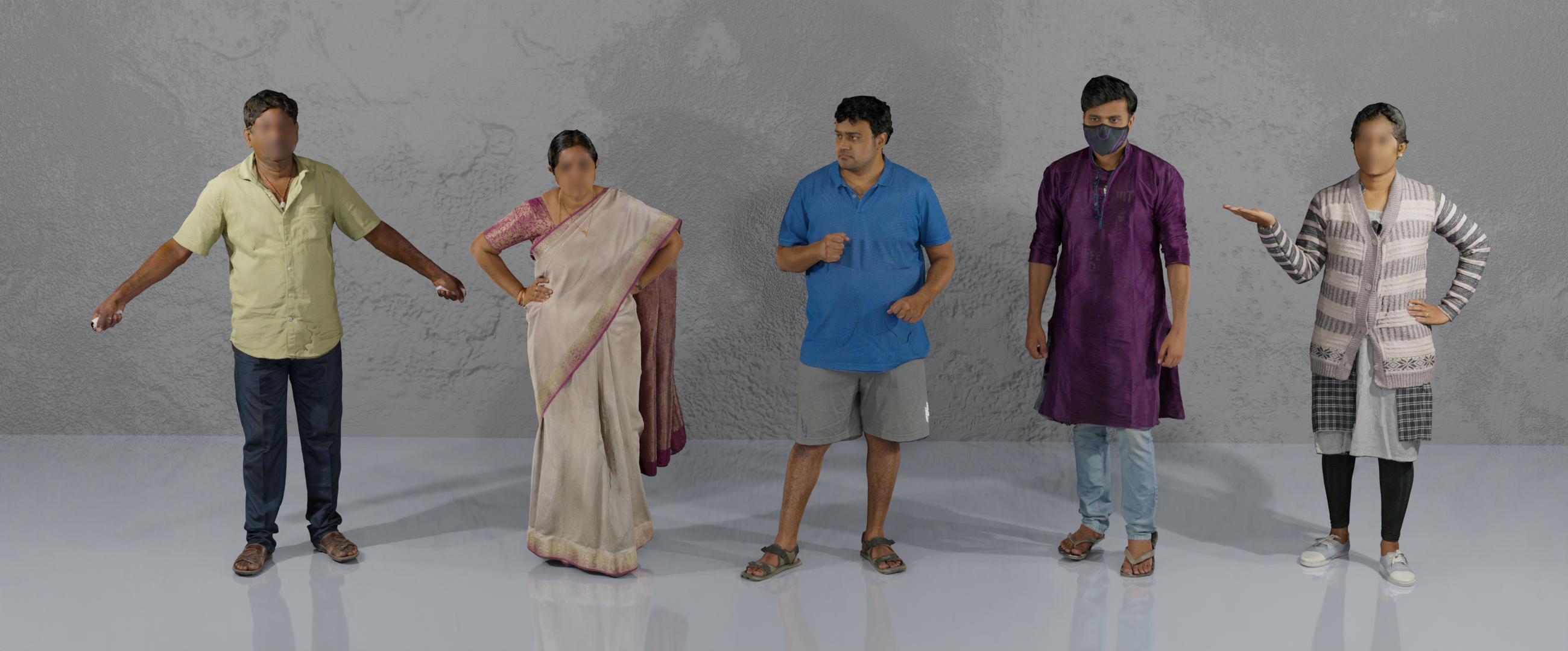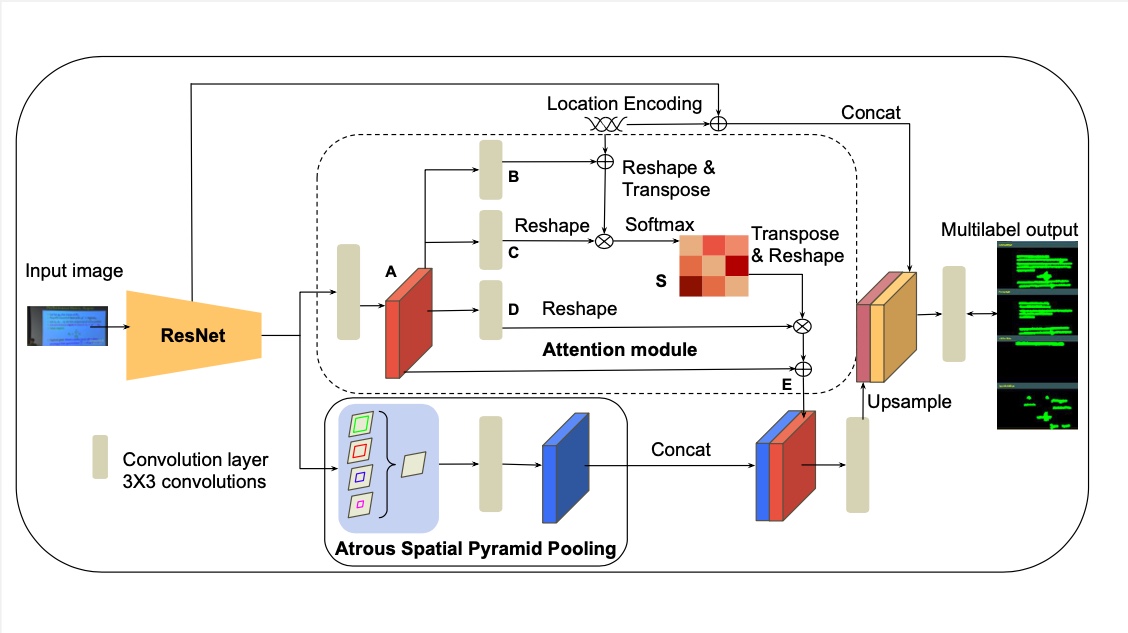
About
3DHumans dataset provides around 180 meshes of people in diverse body shapes in various garments styles and sizes. We cover a wide variety of clothing styles, ranging from loose robed clothing, like saree (a typical South-Asian dress) to relatively tight fit clothing, like shirts and trousers. Along with the high quality geometry (mesh) and texture map, we also provide registered SMPL's parameters. The faces of the subjects are blurred and smoothened out to maintain privacy. You can watch the demo video Here.
Quality
The dataset is collected using Artec Eva hand held structured light scanner. The scanner has 3D point accuracy up to 0.1 mm and 3D resolution of 0.5 mm, enabling capture of high frequency geometrical details, alongwith high resolution texture maps. The subjects were scanned in a studio environment with controlled lighting and uniform illumination.

Download Sample
Please click here to download a sample from the full dataset
Request Full Dataset
To get access to the dataset, please fill and sign the agreement document and send it via email to manager.rnd[AT]iiit.ac.in and asharma[AT]iiit.ac.in with the subject line "Requesting access to 3DHumans (IIITH) dataset". Upon acceptance of your request, you will receive an expirable link with a password from which you can download the dataset. If you find our dataset useful, please cite our technical paper as given below.
Technical Paper
The 3DHumans dataset was first introduced in our technical paper: SHARP: Shape-Aware Reconstruction of People in Loose Clothing (IJCV, 2022)
Citation
If you use our dataset, kindly cite the corresponding technical paper as follows:
@article{Jinka2022,
doi = {10.1007/s11263-022-01736-z},
url = {https://doi.org/10.1007/s11263-022-01736-z},
year = {2022},
month = dec,
publisher = {Springer Science and Business Media {LLC}},
author = {Sai Sagar Jinka and Astitva Srivastava and Chandradeep Pokhariya and Avinash Sharma and P. J. Narayanan},
title = {SHARP: Shape-Aware Reconstruction of People in Loose Clothing},
journal = {International Journal of Computer Vision}
}
Acknowledgements
Dataset collection was financially supported by a DST grant (DST/ICPS/ IHDS/2018) and partially facilitated with manpower support from IHub, IIIT Hyderabad







